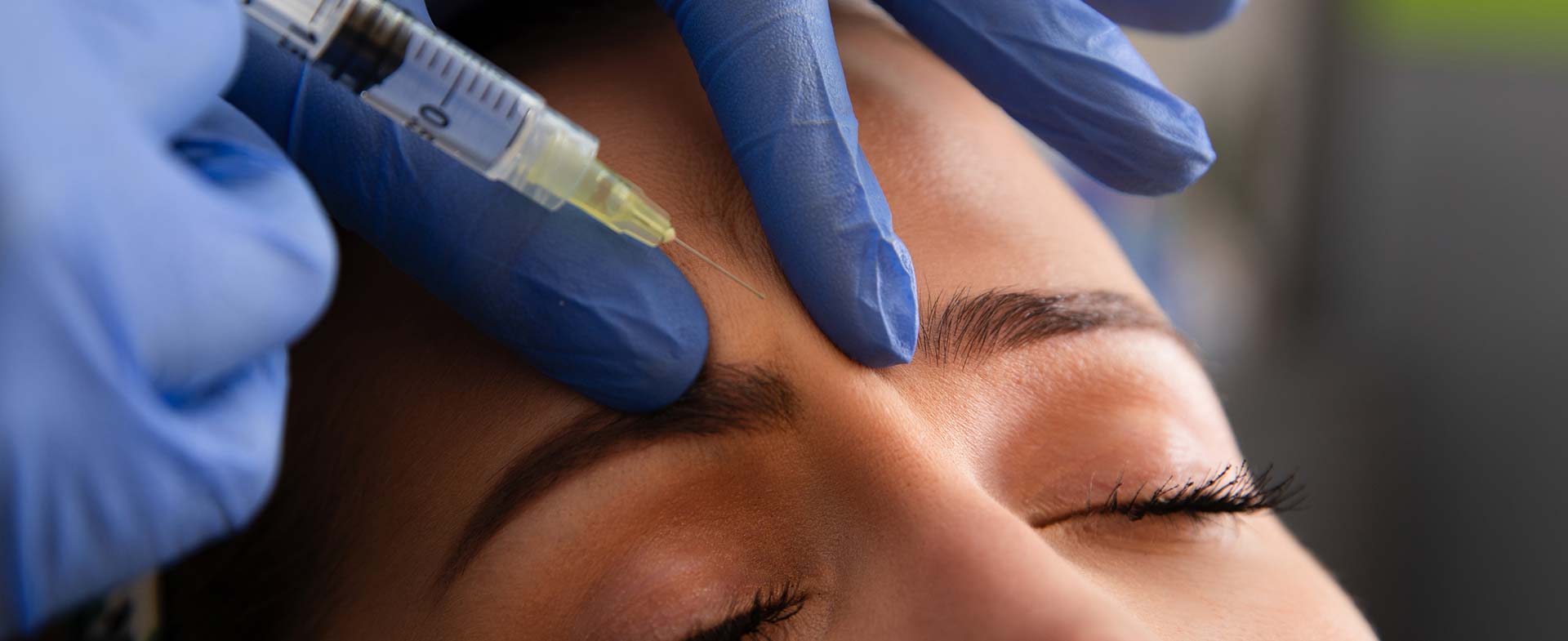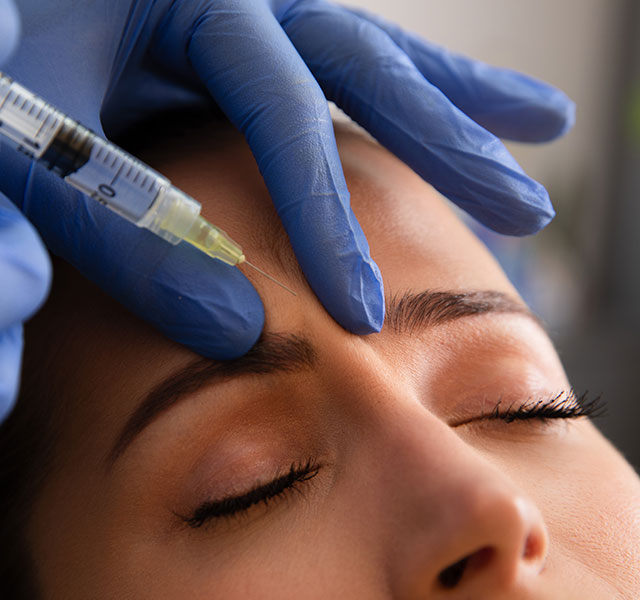Botox® injections are extremely popular. According to the American Society of Plastic Surgeons, over 4 million Americans receive these anti-wrinkle injections every year . It’s important to note that while the word Botox has become commonplace to describe this treatment, there are other similar shots marketed under different brand names, such as Dysport® and Xeomin®.
By any name, these injections can be a quick, albeit temporary, fix for facial wrinkles caused by muscle contraction. But that smoothness comes at a price. “Botox injections cost about $400 to $1000—or even more—per treatment, depending on what you’re treating,” says Shoshana Ambani, M.D., a board-certified plastic surgeon for Henry Ford Health.
Think you know everything there is to know about Botox for wrinkles? We asked Dr. Ambani to help discern fact from fiction when it comes to some of the most common beliefs about Botox.
Botox paralyzes your muscles.
True. Botox consists of a purified Botulinum toxin, which is a neuromodulator. It blocks nerve signals to the muscle into which it was injected, diminishing or preventing muscle contraction. “How much it stops your muscles from contracting depends on how much you use,” says Dr. Ambani. “Using a small amount will help weaken muscle contractions, while a larger amount can completely freeze the muscle and prevent it from contracting at all.”
Botox injections can prevent wrinkles from forming.
True. If you don’t yet have any fine lines when your face is at rest, using Botox to prevent certain facial movements (like frowning, furrowing or squinting) can prevent those lines from forming. The concept is called “preventative Botox,” and it’s becoming more popular with younger adults. “People are doing it already in their 20s and 30s to prevent wrinkles,” says Dr. Ambani. She warns that if you start that young, you want to be sure your practitioner is using the smallest possible doses to achieve the desired effect. “It’s rare, but it can happen that using it over time leads you to develop antibodies against it so it will no longer work,” she says.
If you already have wrinkles, Botox injections can still help soften them and prevent lines from getting more pronounced. “Even deep, etched-in lines will soften,” says Dr. Ambani. “And if you combine Botox with fillers to treat those wrinkles, the effect of the Botox can help the fillers last longer.”
You can only use Botox on crow’s feet and forehead furrows.
False. Technically, the FDA has approved Botox® Cosmetic for forehead lines, the frown lines between your eyebrows, and crow’s feet next to your eyes, but “off-label” uses are quite common. “Botox can be used to smooth bunny lines on the nose, peri-oral or lip lines, and even neck bands,” says Dr. Ambani. “You can use it for a ‘lip flip’ to make the lips look fuller, or to prevent down-turning of the corners of the mouth.” Botox can also be used to narrow your jawline or improve a gummy smile.
Botox is used just for cosmetic treatments.
False. There are medical uses for Botox besides softening wrinkles. Botox injections are now commonly used to fight migraines. Injections into the underarms or palms can help reduce excessive sweating (a condition called hyperhidrosis). And injecting Botox into the masseter muscles in the jaw helps relieve clenching and the headaches associated with it. Urologists inject Botox into the bladder to reduce symptoms of overactive bladder. Botox is also used for patients with facial imbalances to improve symmetry. Additionally, Botox injections can even help people with Reynaud’s disease—a condition in which the hands don’t get enough circulation—by relaxing the muscles around blood vessels.
Botox injections only last a few months.
True. How long Botox lasts depends a bit on where you have it injected. But you can expect the effects to wear off anywhere from about two to six months. And if you stop using it, the lines you were trying to prevent or soften will become more obvious over time.
Botox is safe to use.
True. “Adverse effects are rare and usually not serious,” says Dr. Ambani. The most common one would be slight asymmetry. For example, if you get the injections in your forehead, one eyebrow might sit lower than the other. This can typically be dealt with by doing a touch-up, or you can wait until the effect wears off. Allergic reactions or other complications are uncommon.
If you use Botox, you don’t need any other anti-aging treatments.
False. “To keep your skin looking its best, you should optimize your skincare beyond injectable treatments like Botox,” says Dr. Ambani.
Start every day with a gentle cleanser, an antioxidant serum that contains vitamin C and a mineral-based moisturizer with SPF 30 or higher. “Wearing sunscreen every day, all year round is the best and cheapest thing you can do to prevent photoaging of your skin,” says Dr. Ambani. “It also decreases your risk of skin cancer.”
At night, wash your face and apply a product that contains retinol. That’s an ingredient that increases skin cell turnover, reducing fine lines and wrinkles.
To find a plastic surgeon at Henry Ford, visit henryford.com or call 1-800-436-7936.
Dr. Shoshana Ambani is a board-certified plastic and reconstructive surgeon. She is the medical director of plastic surgery at Henry Ford Medical Center — Cascade Ridge. Her areas of particular interest include breast reconstruction and other breast surgeries, abdominoplasty with liposuction and other body contouring surgeries, rhinoplasty (nose reshaping to improve appearance or breathing), and facial rejuvenation (eye lift, brow lift).



